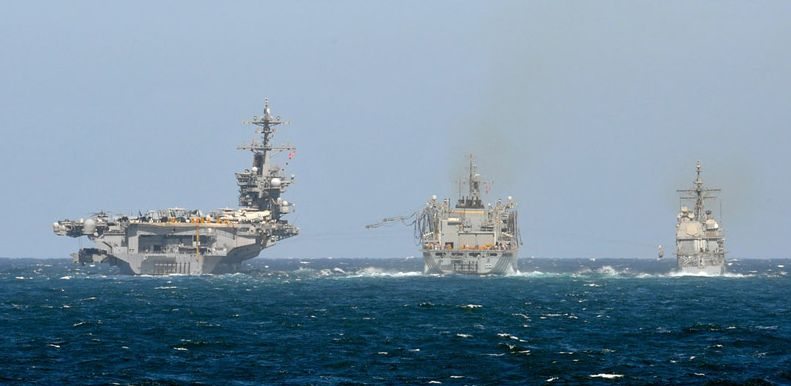Australian Defence Minister Stephen Smith has rejected a proposal to base a US nuclear aircraft carrier and other warships in the country, a move that would rankle key trade partner China.
The idea of using the Australian navy’s western base, HMAS Stirling near Perth, to host an American carrier group and other fighter jets was reportedly raised in a study of US military posture in the Asia-Pacific.
Media in Australia said the Washington-based Centre for Strategic and International Studies (CSIS) report, commissioned by the US Defence Department, had been submitted to Congress.
Smith said after a speech late Wednesday that while increased US access to HMAS Stirling was possible long-term, American aircraft carriers would not be based in Australia.
“The report is an independent report to the United States government. It’s not a United States government document,” he said.
“We don’t have United States military bases in Australia and we are not proposing to. What we have talked about in terms of either increased aerial access or naval access is precisely that — greater access to our facilities.
“The strategic rationale for that is the growing importance of India and the growing importance of the Indian Ocean rim, particularly in a naval and maritime sense.”
In June, Pentagon chief Leon Panetta announced in Singapore that the United States would shift the bulk of its naval fleet to the Pacific by 2020 as part of a new strategic focus on Asia.
It followed a visit to Australia last year by US President Barack Obama, who announced an enhanced defence cooperation with Canberra which will see up to 2,500 US Marines deployed in the country.
The first troops touched down in April on a six-month rotational basis, based on the outskirts of the northern city of Darwin.
It is part of Washington’s plan to bolster its military presence in the strategically vital Asia-Pacific, amid concerns about China’s increasing assertiveness.
The CSIS report considers various options for increasing, decreasing or leaving US military presence in the region at its current level, Australian media said.
Another proposal in the report canvasses expanding the Marines’ presence to a full air ground taskforce that would see thousands more troops in Australia’s north, according to the Australian Financial Review.
But Smith played this down.
“There is no suggestion being made to us that Australia should receive such a large number of Marines transferred from Okinawa or from Guam,” he said.
The United States announced in April it would pull 9,000 Marines out of Japan as it seeks to ease a long-running standoff over the future of its huge military presence in one of its top Asian allies.
In his speech on Australia’s changing strategic circumstances, Smith highlighted the shift towards the Asia-Pacific as a region of global significance, particularly the Indian Ocean rim.
“The US, China and India will be the great strategic powers of our region and the international community,” he said.
“The emergence of three great strategic powers in the region will see an adjustment in the balance of power across the region and around the globe.
“A continued, indeed enhanced, United States’ presence in the Asia-Pacific is essential to peace and stability in our region,” he added.










